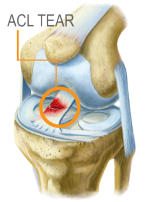The Dangers of Cortisone

Corticosteroids are the main hormone secreted by the adrenal gland, the small gland located on the top of the kidneys. The typical corticosteroid is cortisol, also called hydrocortisone. Its many effects allow us to live in an ever-changing environment. For example, our body normally produces cortisol in response to an allergic reaction, or to keep our blood sugar high when we haven't eaten for quite a long time. They are especially necessary for normal bodily functions during times of stress.
Corticosteroids are used to provide anti-inflammatory relief in affected areas of the body. However, the synthetic equivalent used are many times stronger than our naturally occurring forms. They lessen swelling, redness, itching, and allergic reactions, and in addition to their use for acute and chronic pain, are often used as part of the treatment for a number of different diseases, such as severe allergies or skin problems, asthma, or arthritis. The discovery that they could be injected was received with enthusiasm, and led to widespread use.
Shortly after doctors started injecting cortisone and other steroids into knee joints in the 1950s, researchers began noting severe problems of joint degeneration and therefore discouraged the use of cortisone injections. Today, despite the dangers, cortisone use is widespread and has become the standard of care.
Not only do cortisone injections increase the risk of joint surgery, but also the need for secondary surgery and possible higher risk for post-surgical infections in the joint.
Over the years, many patients have received corticosteroid injections for joint pain. This sounds like a good solution to relieve pain but can leave patients with a worse chronic pain after the injected cortisone runs it's course.
Corticosteroid injections have been used for a very long time. Their anti-inflammatory and pain relief properties have made its use become a very common practice within the medical community, and society as a whole. They have been shown to be effective in decreasing the inflammation and pain of ligament injuries for up to eight weeks; however, these same properties produce the opposite effects on ligament tissues that would bring the proper healing of muscles. Since the body heals via inflammation, cortisone inhibits healing simply by its nature. Instead of regenerating ligamentous tissue, cortisone injections cause further degeneration of the weakened structure and longer and more painful healing periods and symptoms.
